Steam Deck OLED review: a decent upgrade, but left me wanting more (original) (raw)
TechRadar Verdict
The Steam Deck OLED is comfortably the definitive Steam Deck model thanks to its larger, more vivid OLED display. It has the same brilliant design and build as the original, though some of the biggest issues of that system have gone unaddressed. Although better, the battery life is still poor and the lack of any meaningful performance improvements means that many modern titles, even those that are ‘Deck Verified’, struggle to run smoothly out of the box.
Pros
- Great overall design
- High-quality build
- Vivid OLED display
- Truly massive game library
- Competitively priced, especially on sale
Cons
- -
Battery life is a bit better, but still poor - -
Even ‘Deck Verified’ titles can run badly - -
Still too big to be truly portable
Why you can trust TechRadar We spend hours testing every product or service we review, so you can be sure you’re buying the best. Find out more about how we test.
Jump to:
- Two-minute review
- Price and availability
- Specs
- Design
- Performance
- Battery life
- Should you buy it?
- How I tested
Steam Deck OLED: Two-minute review
If all you want to know is whether the Steam Deck OLED is better than the original Steam Deck, then the answer is a definitive yes. This is easily the best Steam Deck model and one of the best handheld games consoles on the market right now thanks to an abundance of improvements that lead to a more comfortable and polished play experience.
The most significant of these is the new 7.4-inch OLED display. This is slightly bigger than the 7-inch LCD panel on the original model but offers a considerably more vivid picture with brighter contrast, better viewing angles, and much richer colors. It’s a huge leap and something that is immediately noticeable when you place a Steam Deck OLED side by side with the original model. The bright primary hues of titles like Hades 2 or Cult of the Lambhave simply never looked better.
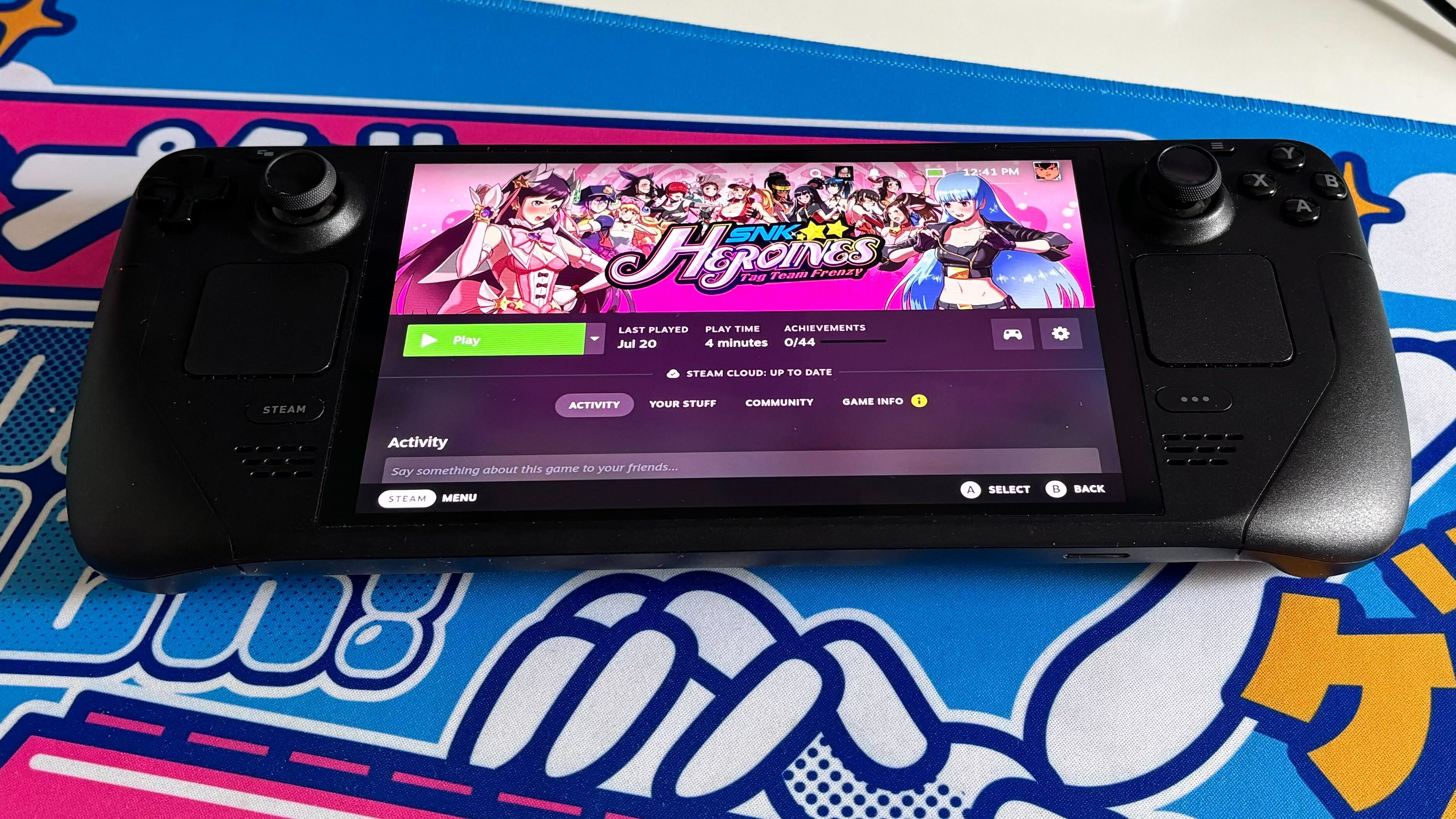
(Image credit: Future)
Other changes here are more subtle. The Steam Deck OLED is slightly lighter and has been fitted with a larger fan for better thermal performance. It also features Wi-Fi 6E, paving the way for faster downloads and more responsive online play for those who own a compatible router. The Steam Deck OLED benefits from more battery life too, with official figures boasting a “30-50%” boost. In practice, however, I soon found that this was still not enough and I had to frequently contend with the handheld completely running out of charge while I was away from a socket.
There have been no noticeable improvements to in-game performance compared to the original model either. The Steam Deck first launched back in February 2022 and could just about run many of the biggest titles of that year, be that Elden Ring, Ghostwire: Tokyo, or Tiny Tina’s Wonderlands. Things are a little different in 2024, however, as the Steam Deck OLED now struggles to maintain decent frame rates in major games.
This wouldn’t necessarily be a problem - there are countless amazing indie titles to experience after all - but I found Valve’s own ‘Deck Verified’ system to be extremely disappointing. In theory, ‘Deck Verified’ games are those that will run decently right out of the box. Fully ‘Deck Verified’ games display a prominent green tick on their store pages, while those that are considered ‘Playable’ but not perfect are marked with an orange exclamation mark.
It’s a great idea on paper, but I quickly learned that many ‘Deck Verified’ games do not run at an acceptable standard. Take Deathloop, for example, which has been awarded the big green tick. It plays at a jittery 15 frames per second (fps) in its default configuration, with huge drops whenever literally anything happens on screen. You can get it to run at a solid 30fps, and look quite good, but it requires a lot of awkward fiddling around with different graphical options. Not quite the seamless, console-like experience that many would want.
Still, if you’re not afraid to tinker, the Steam Deck OLED is a formidable system that helps you experience your existing Steam library in a whole new light.
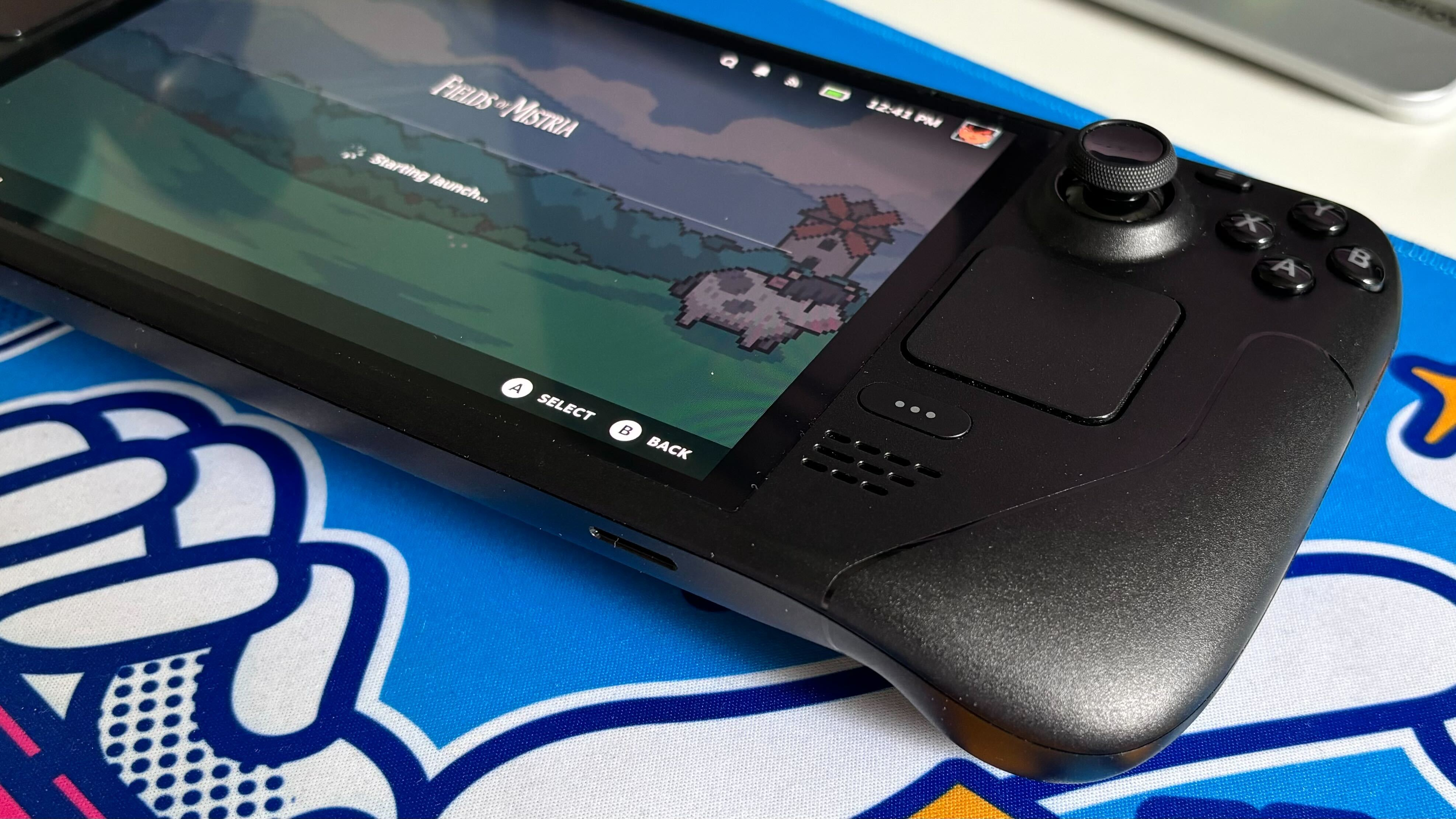
(Image credit: Future)
Steam Deck OLED: Price and availability
- Starts at $549 / £479
- 512GB and 1TB models
- Cheaper LCD model still available
The Steam Deck OLED starts at 549/£479andisavailabledirectlyfromValveviaSteam.Thiswillgetyouthe512GBmodel,whichcomesbundledwithabasiccarryingcase.For549 / £479 and is available directly from Valve via Steam. This will get you the 512GB model, which comes bundled with a basic carrying case. For 549/£479andisavailabledirectlyfromValveviaSteam.Thiswillgetyouthe512GBmodel,whichcomesbundledwithabasiccarryingcase.For649 / £569, you can pick up the 1TB model that comes with an upgraded carrying case.
This upgraded case features a removable liner, which can be used as a more compact and soft way to keep it protected. You also get some digital bonuses in the form of a Steam profile bundle, an exclusive Steam Deck OLED startup movie, and an exclusive virtual keyboard theme - these are nice to have, but shouldn’t really sway your purchasing decision.
Which edition you get will mainly come down to your storage needs. Those with lots of larger games should consider the 1TB model, while those likely to install smaller indie titles or only a few games at a time would be perfectly well served by 512GB. Just note that no matter which model you pick, if you have the technical know-how you can upgrade the internal SSD yourself at a later date.
For $399 / £349, you can also pick up the older LCD model in its 256GB configuration. While this storage capacity would restrict the kinds and number of games that you can keep installed at any one time, this could still be a decent option for those on a particularly tight budget.
Steam Deck OLED: Specs
Swipe to scroll horizontally
| Price | 549/£479(512GB)/549 / £479 (512GB) / 549/£479(512GB)/649 / £569 (1TB) |
|---|---|
| CPU | AMD Zen 2 four core 2.4-3.5GHz |
| GPU | AMD RDNA 2 |
| RAM | 16 GB LPDDR5 |
| Storage | 512GB NVMe SSD / 1TB NVMe SSD |
| Display | 7.4in OLED |
| Ports | USB-C, 3.5mm headphone jack, microSD |
| Connectivity | Wi-Fi 6E, Bluetooth 5.3 |
| Weight | 22.58 oz / 640g |
| Dimensions | 11.73in x 4.61in x 1.93in / 298mm x 117mm x 49mm |
Steam Deck OLED: Design
- Feels good in the hands
- Few changes compared to original model
- Plenty of customization options
There are very few major differences between the original Steam Deck and the Steam Deck OLED in pure design terms. The most noticeable difference is the larger 7.4-inch screen of the Steam Deck OLED, which has a slightly smaller bezel than the 7-inch display of the original. The handheld has the same overall form factor and sleek black colorway, though the power button, which is located on top of the system, is now a bright orange which lends it a neat contrasting look next to the plain volume controls and a headphone jack.
On the left-hand grip, you will find the d-pad, which is a very pleasant shiny plastic and a comfortable slightly concave shape, positioned next to the left thumbstick. There’s also a small square trackpad similar to those found on most laptops. This is in addition to a small ‘View’ button (effectively just the ‘Select’ button of a standard controller) and the ‘Steam’ button - which works like a ‘home’ button.
The right-hand grip is a similar story, with a thumbstick and trackpad in the same position. The d-pad is replaced with a set of face buttons, with the same ABXY layout as a standard Xbox Wireless Controller. Although not mechanical, they’re very pleasantly tactile and respond well to rapid inputs. There is also the ‘Menu’ (or start) button and a ‘Quick Access’ that calls up a small quick settings menu.
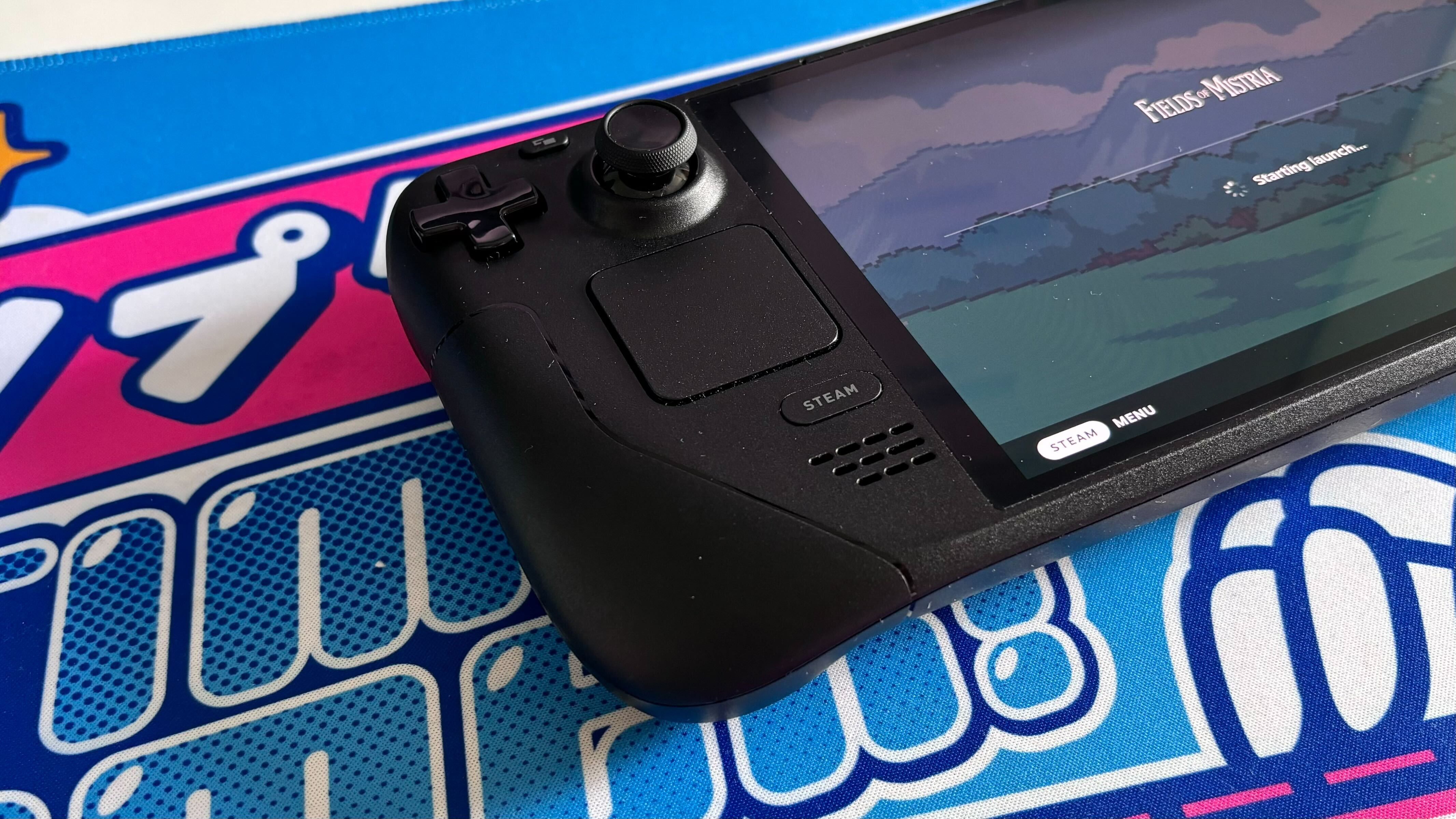
(Image credit: Future)
The flat surface on the top of each thumbstick is actually also its own input, detecting when there is a finger placed on it. While almost no software takes advantage of this, it is a surprisingly practical addition that is sure to delight those who spend a lot of time creating their own custom input bindings. In a first-person shooter like Doom, you can set this thumbstick sensor to activate the Steam Deck OLED’s gyroscope for precise aiming which is delightfully intuitive.
Flipping the Steam Deck OLED over will give you a good look at the triggers and shoulder buttons, which are both highly ergonomic and a great size, plus the four remappable rear inputs. These can be customized to your liking with the suite of tools offered by the Steam Deck OLED’s operating system.
It’s a fantastic design overall and feels incredibly sturdy and comfortable in the hands. My only real complaint is the sheer size of the Steam Deck OLED. At 11.73in / 298mm long, the Steam Deck OLED is absolutely massive and not portable-friendly. I struggled to fit it in my small rucksack in addition to the 14” Acer Chromebook Vero 514 that I take to work, leaving me almost wishing that I had a compact gaming laptop rather than a dedicated handheld.
Steam Deck OLED: Performance
- Great for indie games
- Solid performance in older AAA titles
- Struggles with new AAA releases
If you’ve ever used a Steam Deck, then you will know exactly what to expect from the performance of the Steam Deck OLED. It has not been improved in any noticeable way, so a good number of games will run decently, but not flawlessly. Older titles are absolutely the way to go here, with the likes of Control Ultimate Edition maintaining an impressively solid 60fps at medium settings. God of War is also a highlight, looking brilliant and easily hitting 30fps at high settings
Hellblade Senua’s Sacrifice is simply flawless, with a rock-solid cinematic 45 frames per second (fps) that just never dips no matter what you throw at it. Even some newer games, such as Shin Megami Tensei 5 Vengeance and Persona 5 Tacticaare phenomenal, at a buttery smooth 90fps. The bright red hues and smooth animations of the latter in particular are breathtaking on the OLED display. Indie games are also great on the system. Even in early access, Hades 2 is almost always 60fps with only a few small dips down into the 50s. Fields of Mistria and Double Dragon Gaiden: Rise of the Dragons are playable at 60fps with zero issues at all.
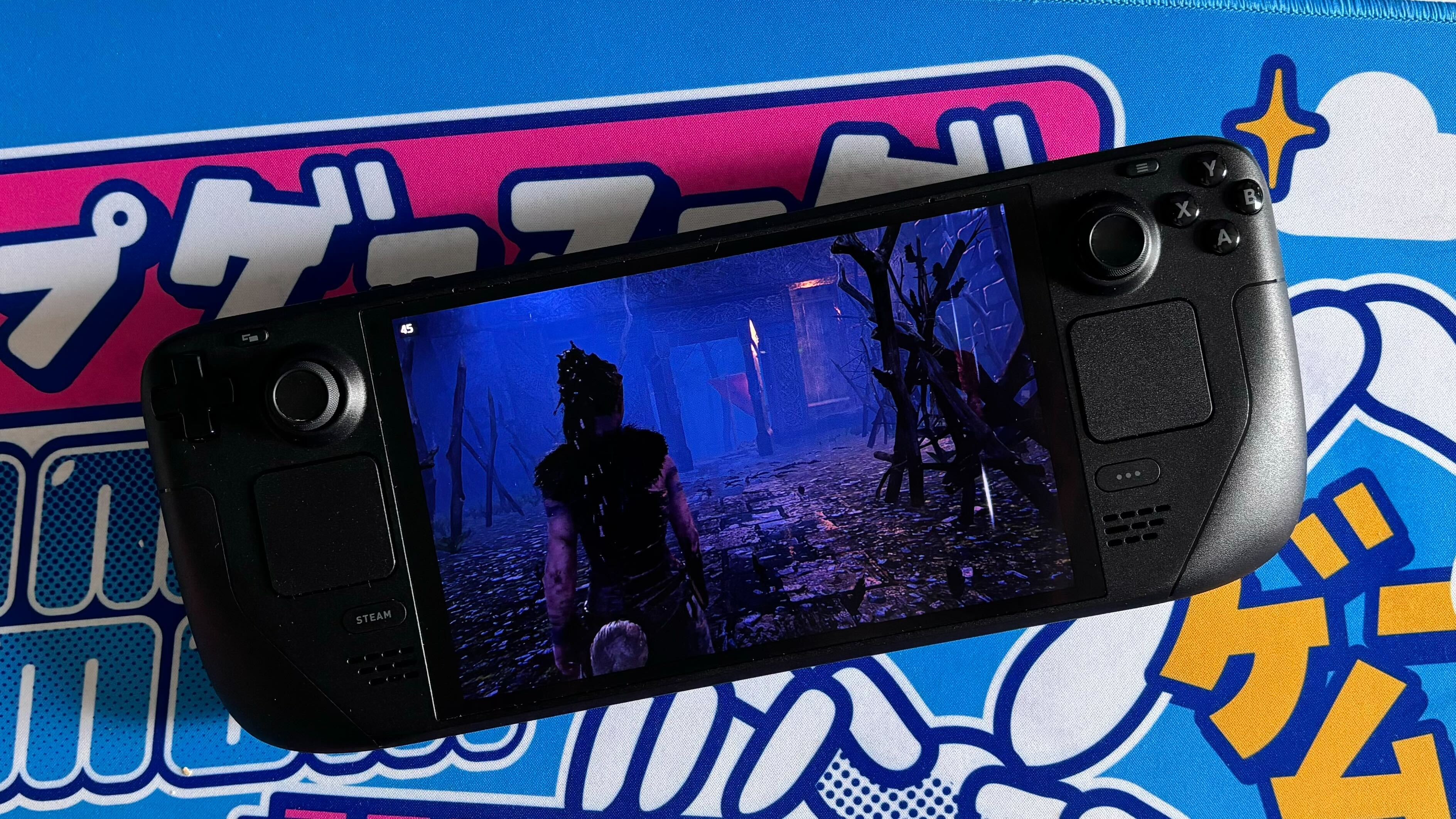
(Image credit: Future)
That said, there are a few older ‘Deck Verified’ titles that are inexplicably poor. Detroit Become Human is a laggy mess, frequently dropping into the 15fps range, and Fallout 4 has some noticeable dips in built-up areas.
Newer games are even more hit-and-miss. Despite being a ‘Deck Verified’ title, Deathloop is flat-out unplayable in its default configuration. It can be wrangled into an unstable 40fps, but it was a struggle that took up almost my entire hour-long commute. The framerate in Redfall was also atrocious, barely scraping the 20s, while Hitman 3 ran okay at about 40fps but looked disappointingly blurry thanks to some rather aggressive upscaling.
Given the number of powerful handheld PCs like the Asus ROG Ally and Lenovo Legion Go that are now on the market, it’s a shame that Valve hasn’t taken the opportunity to give even a small boost to the CPU or GPU of the Steam Deck. This will still be acceptable performance for most players, provided they don't expect to play the latest games, but I’m really hoping that an overhauled, more powerful model is on the horizon.
Steam Deck OLED: Battery life
- Improved compared to Steam Deck
- Still expect just a few hours
- Better battery performance with indie games
The battery life of the Steam Deck OLED has been improved compared to the Steam Deck, but it’s still not particularly impressive. I found that I could squeeze just over two hours of use out of the system while playing intensive games such as God of War, Deathloop, and Hellblade: Senua’s Sacrifice with the brightness set to its middle level which is about one and a half times what you would get on the Steam Deck. This number decreased to just over an hour with some other titles downloading in the background, though this is to be expected.
This was just about enough to occupy a train journey but would not be sufficient if you want to take your Steam Deck OLED on a long flight. You could always bring a separate battery pack with you but adding on the sheer size and weight of the Steam Deck OLED would make this a massive pain.
Thankfully, the battery life increases significantly when you’re playing simpler titles, especially 2D games. I was able to enjoy over five hours of Hades 2 without any major interruptions on the same settings, with similarly great figures for the delightful indie farming sim Fields of Mistria and detective adventure role-playing game (RPG) Disco Elysium. I’m sure this number could go even higher if you reduced the brightness or imposed a strict frame rate limit in the ‘Performance’ section of the Quick Settings.
If you’re just after a new way to play your existing library of indie games, then this battery life should be more than sufficient.
Should I buy the Steam Deck OLED?
Buy it if...
You want a new way to play your Steam games Like the Steam Deck, the Steam Deck OLED is a good way to experience your Steam library on the go. If you want a handheld console that can play your existing games, this is a great choice.
You mainly play indie titles The Steam Deck OLED might struggle to run many of the most recent AAA releases, but it’s an absolute dream when it comes to indie games. It’s perfect if you’re looking for a way to play the likes of Hades 2, Balatro, or Fields of Mistria out and about.
Don't buy it if...
You need better battery life The Steam Deck OLED offers improved battery life, but it’s still one of its biggest weaknesses. If you need to play for more than a few hours at a time, consider other handheld systems like the Nintendo Switch OLED instead.
You want the best performance The Steam Deck OLED does not perform as well as other handheld PCs, namely the ROG Ally. They are more expensive than the Steam Deck OLED but are good alternatives if you crave better framerates.
Also consider
If you’re not keen on the Steam Deck OLED, then consider these two formidable alternatives.
Swipe to scroll horizontally
| Row 0 - Cell 0 | Steam Deck OLED | Steam Deck | Nintendo Switch OLED |
|---|---|---|---|
| Price | 549/£479(512GB)/549 / £479 (512GB) / 549/£479(512GB)/649 / £569 (1TB) | 399/£349∣399 / £349 | 399/£349∣349.99 / £309.99 |
| CPU | AMD Zen 2 four core 2.4-3.5GHz | AMD Zen 2 four core 2.4-3.5GHz | NVIDIA Custom Tegra processor |
| GPU | AMD RDNA 2 | AMD RDNA 2 | NVIDIA Custom Tegra processor |
| GPU | 16GB LPDDR5 | 16GB LPDDR5 | 4GB |
| Storage | 512GB NVMe SSD / 1TB NVMe SSD | 256GB PCIe SSD | 64GB |
| Display | 7.4in OLED | 7in LCD | 7in OLED |
| Ports | SB-C, 3.5mm headphone jack, microSD | SB-C, 3.5mm headphone jack, microSD | USB-C, 3.5mm headphone jack, microSD |
| Connectivity | Wi-Fi 6E, Bluetooth 5.3 | Wi-Fi 5, Bluetooth 5 | Wi-Fi, Bluetooth 4.1 |
| Weight | 22.58 oz / 640g | 23.63oz / 670g | 14.88oz / 421.84g |
| Dimensions | 11.73in x 4.61in x 1.93in / 298mm x 117mm x 49mm | 11.73in x 4.61in x 1.93in / 298mm x 117mm x 49mm | 4in x 9.5in x 0.55in / 101.6mm x 241.3mm x 13.97mm |
Steam Deck You can still buy the original Steam Deck from Valve in its 256GB configuration. It’s also readily available secondhand. You miss out on an upgraded screen, but the lower asking price could make it a better choice for those on a tighter budget and it still offers great value.
Read our full Steam Deck review
Nintendo Switch OLED The Nintendo Switch OLED is the definitive version of Nintendo’s latest console. It can be found in fantastic value bundles and comes in much more compact and therefore more portable than the Steam Deck OLED. It also boasts a brilliant library of exclusive games such as Animal Crossing: New Horizons and Super Mario Odyssey.
Read our full Nintendo Switch OLED review
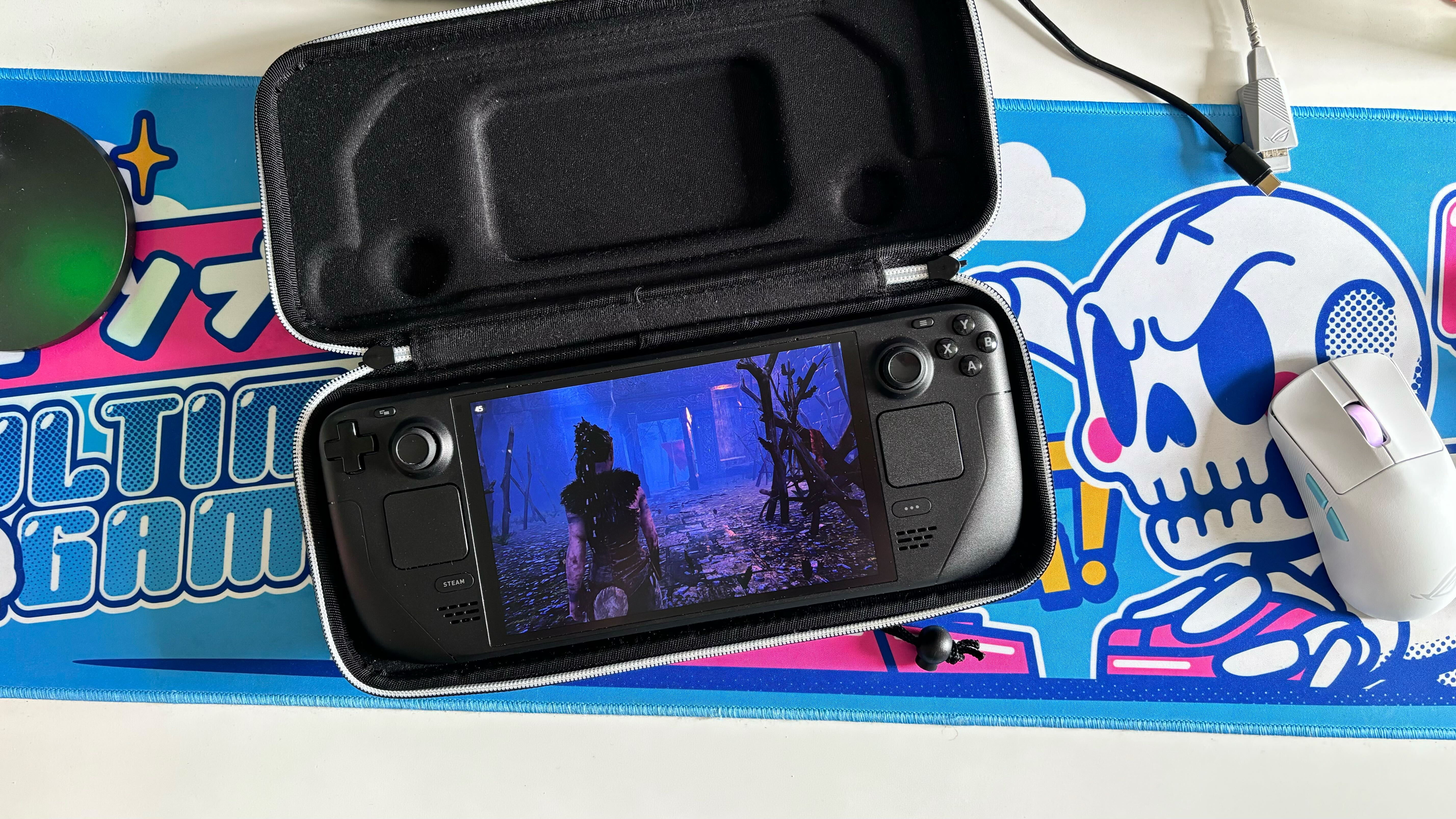
(Image credit: Future)
How I tested the Steam Deck OLED
- Tested for over three months
- Played a wide variety of games
- Tested in both handheld mode and with a dock
I tested the Steam Deck OLED for well over three months, taking it out and about with me whenever possible and enjoying plenty of gaming time at the office or at home plus on a range of public transport. I experienced a wide variety of games including plenty of AAA releases and indie titles. Some of the favorites that I didn’t mention in this review included Shenmue 3, Like a Dragon Gaiden: The Man Who Erased His Name, Dishonored 2, Grounded, Lego 2K Drive, Asterigos Curse of the Stars, and much more.
Throughout my time with the Steam Deck OLED, I compared the play experience to my hands-on testing of other handheld systems. I used the Final VR500 and SteelSeries Tusq earbuds for audio while I was taking the console out and about.
I also experimented with a few accessories, including the Xbox Wireless Controller for when I wanted to play on a bigger screen. For this purpose, I used a standard laptop dock with an HDMI output and my Lenovo Q24i-20 monitor. Although the bump to a 1080p resolution certainly didn't help performance in AAA games, I found this to be a suitable solution for less intensive indie titles.
First reviewed August 2024

Dash is a technology journalist who covers gaming hardware at TechRadar. Before joining the TechRadar team, he was writing gaming articles for some of the UK's biggest magazines including PLAY, Edge, PC Gamer, and SFX. Now, when he's not getting his greasy little mitts on the newest hardware or gaming gadget, he can be found listening to J-pop or feverishly devouring the latest Nintendo Switch otome.